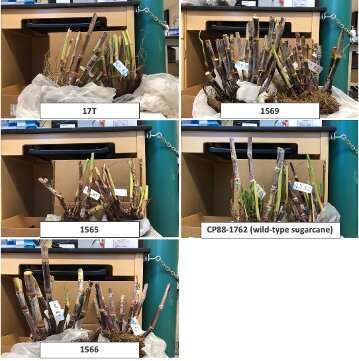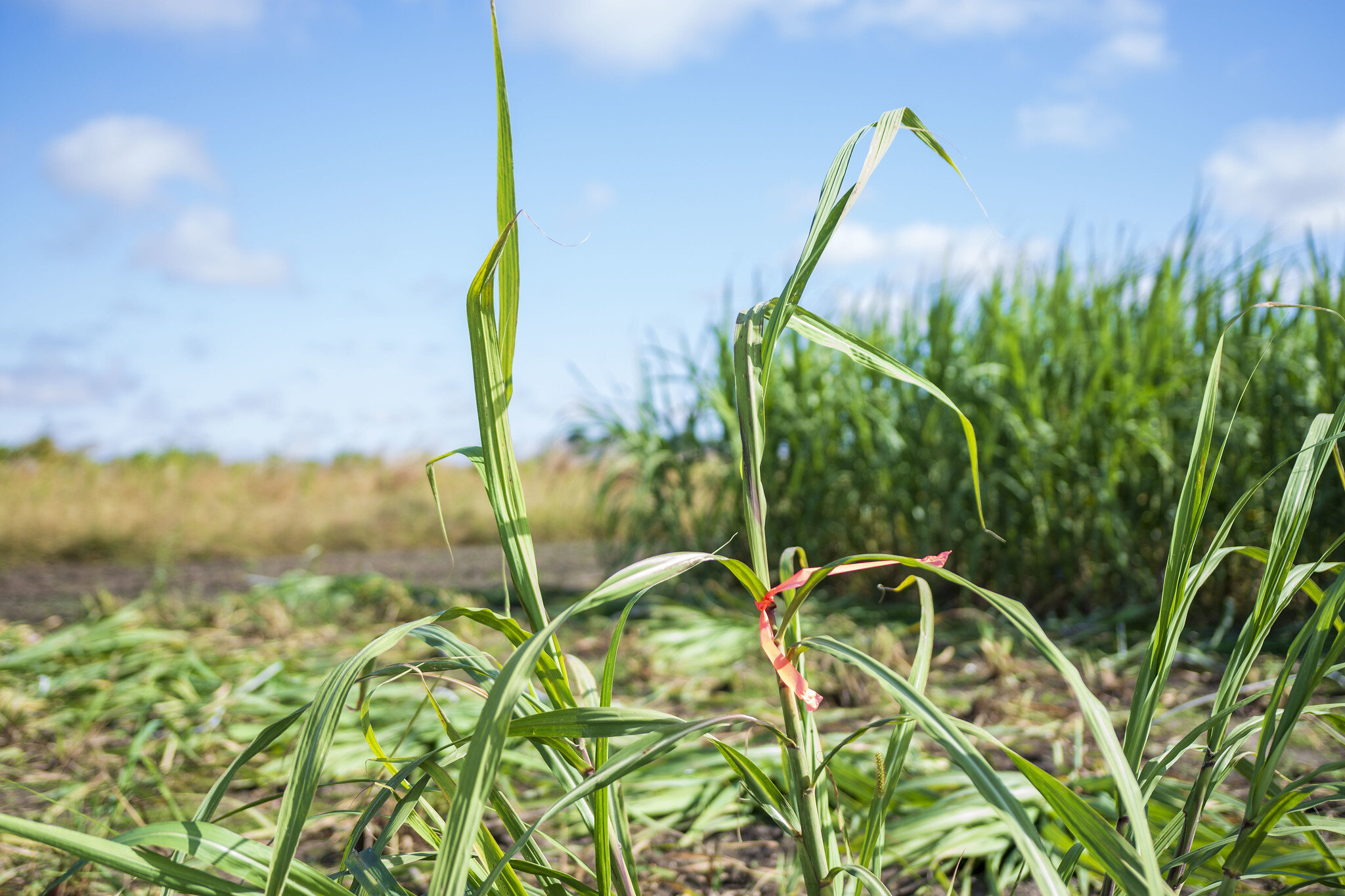By April Wendling, University of Illinois at Urbana-Champaign Institute for Sustainability, Energy, and Environment
In a new collaboration, scientists at the Center for Advanced Bioenergy and Bioproducts Innovation (CABBI) have identified the types of microbes that associate with engineered oilcane. Further exploration of the oilcane microbiome may reveal opportunities to leverage plant-microbial interactions in these feedstocks, which could increase oil yields for sustainable bioenergy production.
In terms of biomass, sugarcane is the world’s most-produced crop, and it’s not hard to see why; it provides the feedstock for 26% of the world’s bioethanol and 80% of global sugar production.
A particular variety of metabolically engineered sugarcane, called oilcane, accumulates 30 to 400 times more energy-dense triacylglycerol (TAG) than wild type sugarcane, which makes it an ideal crop for biofuel production. By studying this feedstock that diverts natural sugars for oil production, researchers can provide sustainable, plant-based fossil fuel alternatives.
One avenue that researchers are looking into for crop improvement is microbiome management. Understanding the interactions between plants and the microorganisms that live on and in them may help us develop agricultural management practices that can increase crop productivity and resilience. While the sugarcane microbiome has been studied, the oilcane microbiome has historically been uncharted territory.
In a collaboration between CABBI’s Sustainability and Feedstock Production themes, researchers explored the differences in microbiome structure between several oilcane accessions and wild-type sugarcane. The published study examined the microbiomes of four different oilcane accessions (developed by Altpeter’s team at the University of Florida) in comparison to non-modified sugarcane.

The team planted each of these engineered oilcanes and sugarcane in the same soil. Once grown, they sampled the microbes of the leaves, stems, roots, rhizosphere soils, and bulk soil. Using cutting-edge sequencing and bioinformatics tools, the team found that each accession of oilcane had different microbiomes than the non-modified sugarcane.
Interestingly, the greatest differences in microbiome composition were observed in the oilcane accession that most highly expressed the WRI1 transgene. WRI1 is known as the “master-regulator” of lipid biosynthesis and contributes significant changes in the gene expression profile, which impact the plant’s ability to accumulate energy-dense TAG.
This study showed that metabolically engineered oilcane accessions differing in their transgene expression will associate with distinct microbiomes, suggesting that the metabolic differences in oilcane (compared to sugarcane) play a part in determining the composition of the plant’s microbiome.
The researchers postulate that the oilcane’s association with specific microbes in the soil may benefit the plant in some way, as is often the case in other plants. The team hopes to direct further research toward understanding how microbiomes unique to certain oilcane types interact with their host plants.
“Insight in this area could lead to breakthroughs in oilcane management, in which growers could tailor plant-microbe interactions to improve their crop and oil yields,” said Howe. Altpeter added, “Additional research may also lead to a tailored microbiome that could boost agronomic performance and yield from metabolically engineered oilcane.”
More information:
Jihoon Yang et al, Microbiome differences in sugarcane and metabolically engineered oilcane accessions and their implications for bioenergy production, Biotechnology for Biofuels and Bioproducts (2023). DOI: 10.1186/s13068-023-02302-6
Provided by University of Illinois at Urbana-Champaign Institute for Sustainability, Energy, and Environment
Citation:
Researchers chart oilcane microbiome (2023, May 10)
retrieved 10 May 2023
from https://phys.org/news/2023-05-oilcane-microbiome.html
This document is subject to copyright. Apart from any fair dealing for the purpose of private study or research, no
part may be reproduced without the written permission. The content is provided for information purposes only.
Denial of responsibility! TechCodex is an automatic aggregator of the all world’s media. In each content, the hyperlink to the primary source is specified. All trademarks belong to their rightful owners, and all materials to their authors. For any complaint, please reach us at – [email protected]. We will take necessory action within 24 hours.

Jessica Irvine is a tech enthusiast specializing in gadgets. From smart home devices to cutting-edge electronics, Jessica explores the world of consumer tech, offering readers comprehensive reviews, hands-on experiences, and expert insights into the coolest and most innovative gadgets on the market.
Denial of responsibility! TechCodex is an automatic aggregator of Global media. In each content, the hyperlink to the primary source is specified. All trademarks belong to their rightful owners, and all materials to their authors. For any complaint, please reach us at – [email protected]. We will take necessary action within 24 hours.


